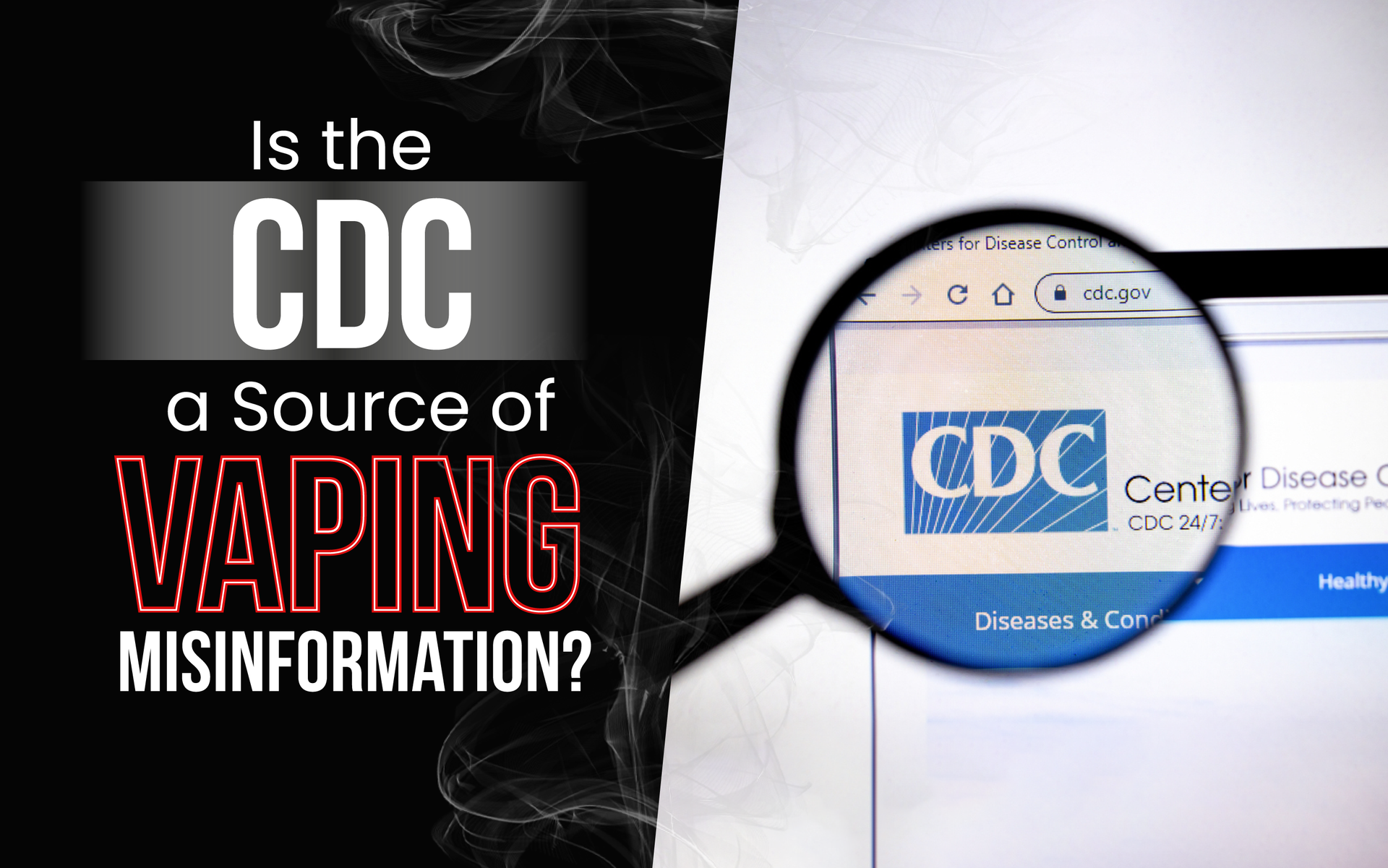Is the CDC a Source of Vaping Misinformation?
Estimated 0 min read
As you might have heard from Jim McDonald at Vaping360.com, a group of tobacco researchers has asked the Center for Disease Control and Prevention (CDC) and the U.S. Surgeon General (SG) to correct misinformation on nicotine vaping they’ve shared since 2016.
Unexpectedly, the SG has recently taken on a COVID-inspired initiative to reduce health misinformation. However, according to the authors of the study, the agency still refuses to acknowledge misinformation being spread about nicotine vaping.
More specifically, the authors refer to the SG’s 2016 youth vaping report and the CDC’s misinformed conclusions on the 2019 lung injury outbreak as the main sources of misinformation by both agencies.
What the Agencies Say
The SG’s report claims that nicotine vaping is a gateway to youth smoking, while the CDC’s use of the term EVALI is considered by many as a cause of misinformation.
And here’s why- according to the editorial published in the journal Addiction, co-written by authors from multiple universities like Georgia State, Harvard Medical, Penn State, and the Medical University of South Carolina and not to mention former Truth Initiative board chairman, Tom Miller:
The primary case against the CDC is the use of the term EVALI, used to describe the 2019 lung injury epidemic, which stands for “e-cigarette, or vaping, product use associated lung injury”. The argument is that the term throws all vapes and e-cigarettes into the same basket even though the main cause of the problem was identified to be illegal THC vape carts contaminated with Vitamin E Acetate and none of the reported cases of “EVALI” were actually associated to any kind of nicotine vape product.
This is particularly dangerous because it drives eyes away from the real cause of the epidemic, which in turn is actually counterproductive to what the CDC claims to be its goal; disease control and prevention. When mentioning ‘e-cigarettes’ and ‘vaping’ as the causes, you are indirectly taking attention away from black market THC vape products.
There are also multiple versions and opinions that say that the CDC is engaging in outright deception when it comes to this misinformation but we’d rather shy away from those claims as they are biased opinions, even if they’re trying to help the vape industry. What we can say for sure is that the term EVALI is not 100% clear and may cause more unwarranted confusion than it does certainty for the general public.
However:
The CDC does not plan to stop using the term any time soon. This could be a grave mistake, even though black market THC carts seem to be far more strictly regulated than ever before.
But the point is, it should be made abundantly clear to the public that the primary cause of the 2019 public health epidemic was Vitamin E Acetate in black market carts, not vaping and e-cigarettes altogether.
And why is this a concern?
Well, for starters, it could motivate some people to continue smoking. Some sources claim it has, but we can’t attest to it conclusively. It also means that we have the opportunity to make people more aware of black-market vape products, but instead we choose to drive them away from vape products altogether without really considering the decision’s potential negative outcomes. Lastly, we’re also inadvertently hurting entrepreneurs and small businesses that have made an investment in the vape industry without really acknowledging the fact that their products were not the cause of the 2019 public health issue.
According to the researchers that Jim McDonald mentions in his piece, “No research has identified any chemicals found in nicotine e-cigarettes as the cause”, and Vitamin E Acetate is not soluble in nicotine e-liquids or has ever been detected in nicotine e-liquids. According to the article, the CDC also rejected a formal petition by the authors to remove e-cigarettes from the name and add “adulterated THC” to the term. The petition was also signed by an additional 68 experts before being submitted to and rejected by the CDC.
The Issue With the Surgeon General’s Report
As for the SG, the authors explain that the report associated vaping with rises in youth smoking. But when the report came out, youth vaping was on the rise, but the rates of youth smoking were actually sinking rapidly. This is a decline that has continued to this day, as we explain in our post on why lower vape taxes may mean lower smoking rates among young adults.
Closing Thoughts
We can’t really say for sure what vaping misinformation is at this point. There are just too many avenues and biased opinions firing both ways, which generates confusion. What we can say is that some of the wording used by anti-vape advocates can be misleading, but how much of that causes flaws in public health is impossible to say. But some people have very solid points to make and it’s our job to communicate those opinions.







